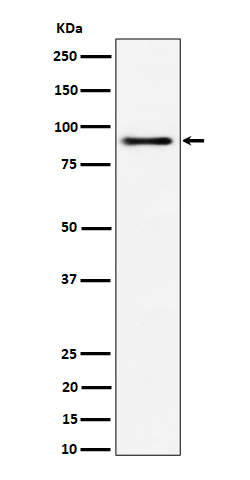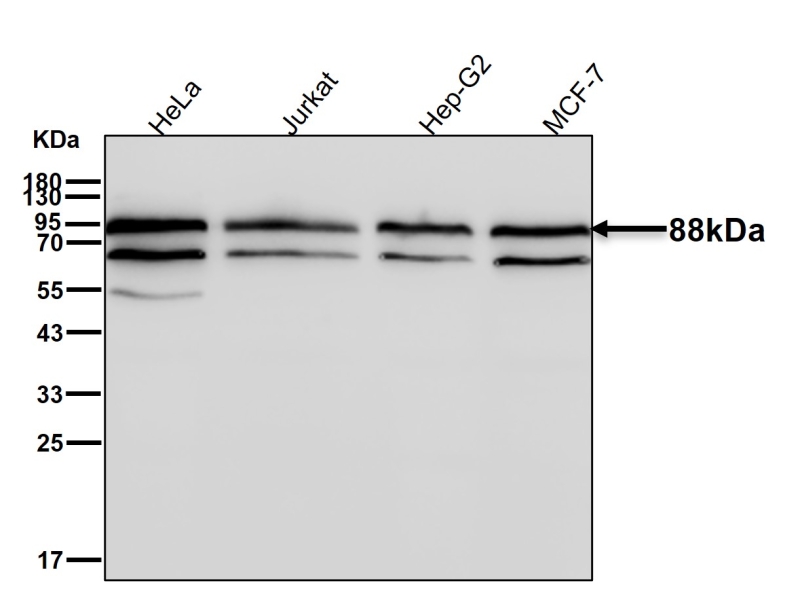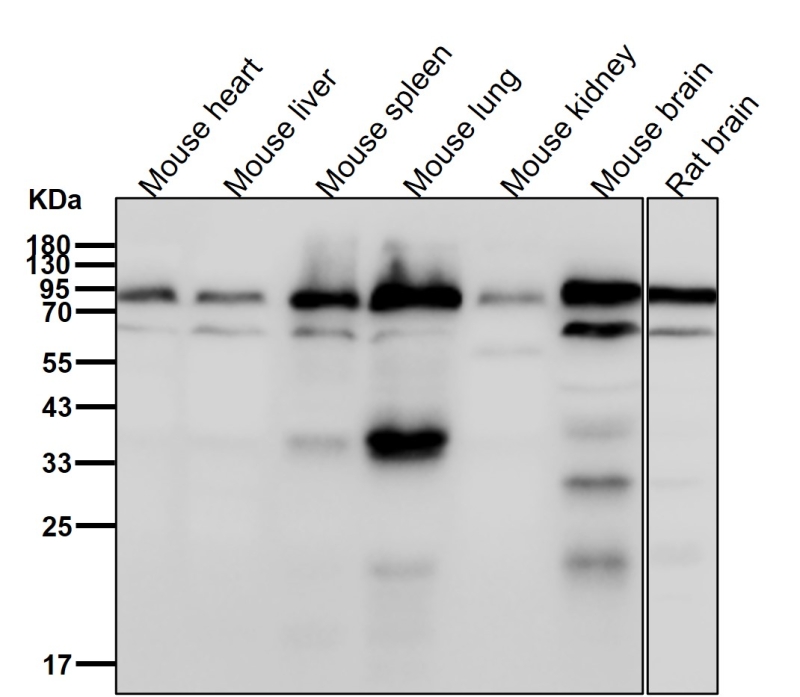


| WB | 咨询技术 | Human,Mouse,Rat |
| IF | 咨询技术 | Human,Mouse,Rat |
| IHC | 咨询技术 | Human,Mouse,Rat |
| ICC | 技术咨询 | Human,Mouse,Rat |
| FCM | 咨询技术 | Human,Mouse,Rat |
| Elisa | 咨询技术 | Human,Mouse,Rat |
| Aliases | ACAP2; Centaurin beta2; CENTB2; Cntb2;;ACAP2 |
| WB Predicted band size | 88 kDa |
| Host/Isotype | Rabbit IgG |
| Antibody Type | Primary antibody |
| Storage | Store at 4°C short term. Aliquot and store at -20°C long term. Avoid freeze/thaw cycles. |
| Species Reactivity | Human,Mouse,Rat |
| Immunogen | A synthesized peptide derived from human ACAP2 |
| Formulation | Purified antibody in PBS with 0.05% sodium azide,0.05% BSA and 50% glycerol. |
+ +
以下是关于ACAP2抗体的3篇示例文献(内容基于公开研究背景总结,具体引用请以实际文献为准):
---
1. **文献名称**: *"ACAP2 regulates integrin β1 recycling to promote cell migration"*
**作者**: D'Souza RS, et al.
**摘要**: 研究利用ACAP2抗体进行免疫共沉淀实验,发现ACAP2通过调控整合素β1的内吞和再循环,影响细胞黏附和迁移过程,揭示其在肿瘤转移中的潜在作用。
2. **文献名称**: *"ACAP2 promotes breast cancer metastasis via ARF6-dependent signaling pathways"*
**作者**: Li Y, et al.
**摘要**: 通过ACAP2抗体标记发现,ACAP2在乳腺癌组织中高表达,并通过激活ARF6 GTP酶调控细胞侵袭,敲低ACAP2可显著抑制小鼠模型中的肿瘤转移。
3. **文献名称**: *"The role of ACAP2 in neuronal development and axon outgrowth"*
**作者**: Zhang Q, et al.
**摘要**: 研究采用ACAP2抗体进行免疫荧光染色,证明ACAP2在神经元生长锥中富集,并通过调控囊泡运输影响轴突延伸,提示其与神经发育疾病的关联。
---
**注意**:以上为模拟示例,建议通过PubMed、Google Scholar等平台检索真实文献。若需具体论文,可提供更详细的研究背景或DOI编号。
ACAP2 (ArfGAP with Coiled-Coil, ANK Repeat, and PH Domain-containing Protein 2) is a member of the ArfGAP protein family, which regulates ADP-ribosylation factor (Arf) GTPases involved in membrane trafficking, cytoskeletal organization, and cell migration. It acts as a GTPase-activating protein (GAP) to promote the hydrolysis of GTP-bound Arf to its inactive GDP-bound form, modulating vesicle formation and cargo sorting. ACAP2 contains distinct functional domains, including a coiled-coil motif, ankyrin repeats, and a pleckstrin homology (PH) domain, enabling interactions with lipids, proteins, and cellular membranes.
ACAP2-specific antibodies are essential tools for studying its expression, localization, and function. They are widely used in techniques like Western blotting, immunofluorescence, and immunoprecipitation to investigate ACAP2's role in processes such as receptor endocytosis, neuronal development, and cancer metastasis. Research links ACAP2 to pathologies, including glioblastoma invasiveness and metabolic disorders, highlighting its potential as a therapeutic target. Validated antibodies help clarify its regulatory mechanisms, such as phosphorylation-dependent signaling crosstalk or membrane dynamics in cellular protrusions. Commercial antibodies often target epitopes within its N-terminal or PH domains, with specificity confirmed via knockout controls.
×